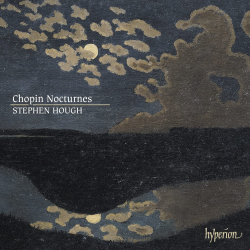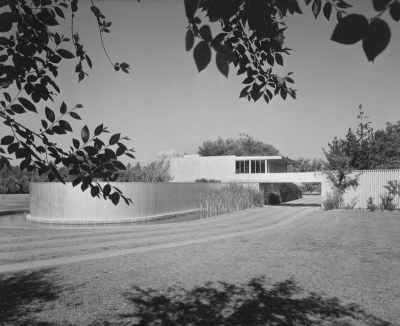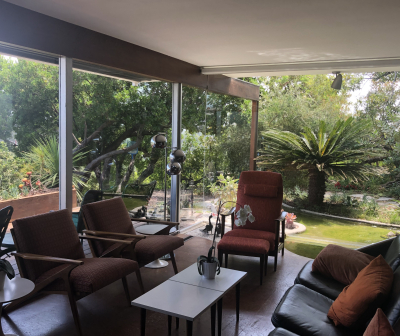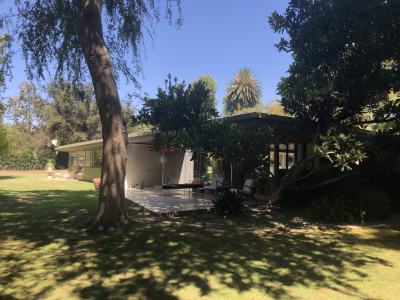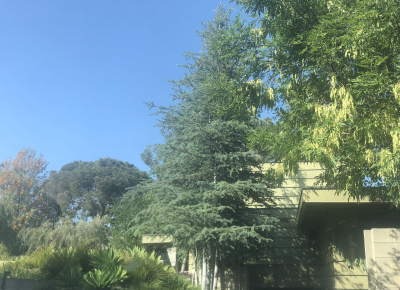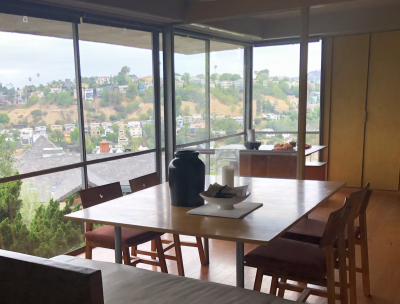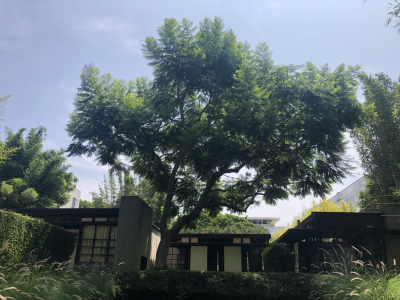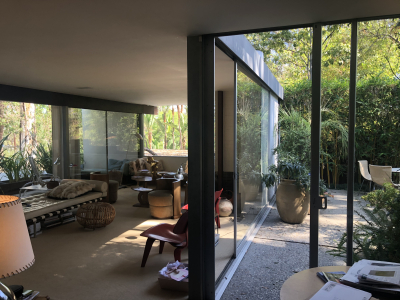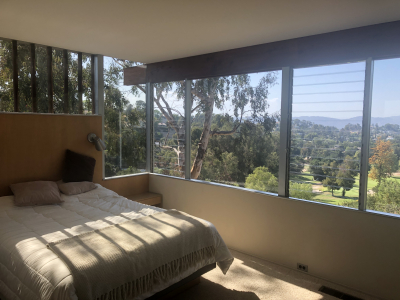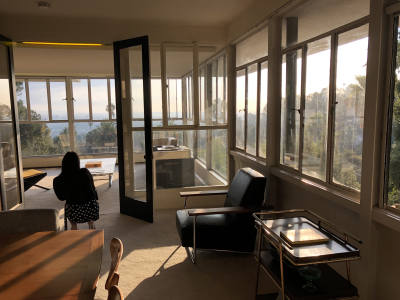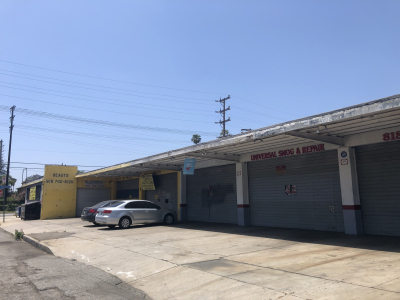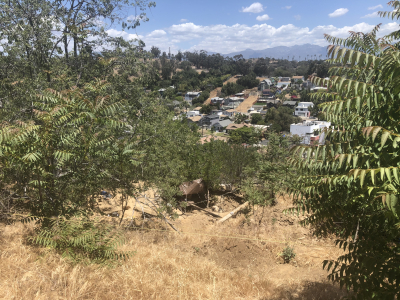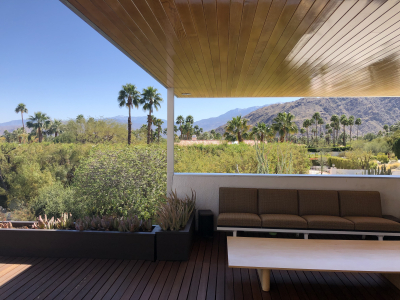Alex Ross's Blog, page 47
November 12, 2021
A Nightafternight playlist
New and recent releases of interest.
Chopin, Nocturnes; Stephen Hough (Hyperion)
Baritenor: arias by Mozart, Méhul, Spontini, Rossini, Adam, Donizetti, Verdi, Thomas, Offenbach, Leoncavallo, Lehár, Wagner, Ravel, Orff, Korngold; Michael Spyres, Marko Letonja conducting the Orchestre philharmonique de Strasbourg and the Choeur d’hommes de l’Opéra national du Rhin (Erato)
Liza Lim, The Oresteia, Yuè Lìng Jié, Mother Tongue, The Navigator; Julie Edwardson, Deborah Kayser, Tyrone Landau, Andrew Muscat-Clark, Grant Smith, Jeannie van de Velde, Piia Komsi, Omar Ebrahim, Philip Larson, Talise Trevigne, Andrew Watts, with Sandro Gorli, Simon Hewett, Jean Deroyer, and Manuel Nawri conducting ELISION (Huddersfield Contemporary)
Time Travelers: works by Bach, Handel, Ravel, Ligeti, Barber, Brahms, Couperin, Rameau, Adès; Inon Barnatan (Pentatone)
Anima Aeterna: arias and works by Zelenka, Fux, de Almeida, Handel, Nucci, Manna; Jakub Józef Orliński, Fatma Said, Francesco Corti leading Il pomo d'oro (Warner)
Jessie Cox, When You're a Star (unknown tapes)
Ameriscapes: works by Loeffler, Hanson, Ruggles, Cowell; Robert Trevino conducting the Basque National Orchestra (Ondine)
Bach, Mein Herze schwimmt im Blut and Jauchzet Gott in allen Lande, Handel, excerpts from Brockes Passion and Giulio Cesare; Sabine Devieilhe, Raphaël Pichon leading Pygmalion (Erato)
Du Yun and Raven Chacon, Sweet Land; The Industry (The Industry Records)
Florence Price, Symphonies Nos. 1 and 3; Yannick Nézet-Séguin conducting the Philadelphia Orchestra (DG)
Michael Pisaro-Liu, Tombstones; Barbara Dang and Muzziz (elsewhere)
Gubaidulina, Dialog: Ich und Du, The Wrath of God, The Light of the End; Vadim Repin, Andris Nelsons conducting the Gewandhausorchester Leipzig (DG)
Brahms, Symphony No. 4, MacMillan, Larghetto; Manfred Honeck conducting the Pittsburgh Symphony (Pentatone)
Josquin the Undead: Grandelavoix (Glossa)
November 1, 2021
October 25, 2021
Jonas Kaufmann, Michael Spyres
Divo. The New Yorker, November 1, 2021.
October 20, 2021
October 19, 2021
Marian Anderson's "Crucifixion"
A Cultural Comment on the New Yorker website.
October 12, 2021
Blanchard's Fire Shut Up in My Bones
Breakthrough. The New Yorker, Oct. 19, 2021.
October 5, 2021
An Anna Höstman moment
The pianist Cheryl Duvall, who beautifully recorded Höstman's piano works for the album Harbour, wrote to me about the video: "It was created by Canadian experimental photographer/filmmaker Ella Morton, who recently won the CENTER Environmental Award for her artistic environmental activism through photography. She uses analogue film that is processed in numerous ways to either highlight or degrade/dissolve the beauty of our natural landscapes — particularly those in the Arctic region. Through these processes, she aims to show both the majesty and fragility of our natural world and what we risk losing due to the climate crisis. As people passionate about the environment, both Anna and I felt a connection to these ideas and images and a kinship with music from our album. We hope the collaborative product is moving and inspires people to take more action or donate to organizations that are doing good work towards environmental justice. It will actually be screened at the upcoming UN Climate Change Conference later this month in Glasgow."
October 4, 2021
Basque Ravel
My longtime colleague David Hurwitz led me to an uncommonly vibrant all-Ravel disc by Robert Trevino and the Basque National Orchestra, released last year by Ondine. The latest Basque disc, Americascapes, with works by Loeffler, Ruggles, Hanson, and Cowell, is also superb.
September 23, 2021
Neutra-Schoenberg
The Josef von Sternberg House, now destroyed.
The Austrian-born architect Richard Neutra, whom I write about in this week's issue of The New Yorker, arrived in Los Angeles well before the great wave of émigrés who fled Hitler's takeover in Germany and the subsequent Nazi invasions of Europe. He established himself in the city in 1925 and became an American citizen in 1929. Although he was Jewish, he seems not to have identified strongly with the sufferings of Jews back in Austria and Germany. The author Lawrence Weschler — who, as the grandson of the composer Ernst Toch, grew up in the émigré milieu — asked Dione Neutra about this in an interview for the UCLA Oral History Program: "Some people who were nominally Jewish became much more Jewish as a result of the Nazis coming to power . . . Was there anything like that going on with your husband?" Dione answered: "No, he was so overwhelmed through his, you know, trying to make a living, trying to keep his head above water, that I don't think that he was very aware of it." In this respect, Neutra was very different from Arnold Schoenberg, another Viennese native, who arrived in Los Angeles in 1934. Schoenberg re-converted in Judaism, removing the umlaut from his name in the process, and embraced Zionist politics. He had been fiercely prescient about the rise of anti-Semitism in Austria and concluded at a quite early date that Hitler was planning a Jewish genocide.
Given that disparity, and various other cultural differences, it's perhaps not surprising that no strong connection existed between Neutra and Schoenberg. Nonetheless, there were several interesting links between the two. Neutra may have encountered Schoenberg in childhood; according to the historian Thomas S. Hines, his brothers made music with the composer and his pupils. Then, in March 1913, Neutra attended the famous "scandal concert" at the Musikverein, perhaps the most violent event in the early history of musical modernism. Hines quotes a fascinating description of the event from Neutra's diary — a source I've seldom seen cited in the Schoenberg literature. It reads:
Right at the beginning, a few people began to bawl and scream, there was talking and yelling and knocking about. The rabble just had the feeling that there was someone to butcher in a cheap manner, someone there for the taking. It was . . . shocking to witness . . . At times I thought I would jump out of my skin. After the Schönberg symphony [the Chamber Symphony No. 1], which despite everything made an impression of power and of an artwork on me, a hellish racket broke out. In the second gallery, a few people were thrown out after hard scuffles. Berg's 'Lieder' were interrupted by roaring [and] neighing. Earlier [Adolf] Loos had almost engaged in acts of violence. Schönberg screamed threats into the auditorium. The 'Lieder' were completed. Then all limits broke. People challenged each other, were torn apart, screamed, laughed, howled. Arthur Schnitzler sat across from me in the second box. Someone yelled to the audience to behave in a civilized manner or leave. Someone yelled back 'rascal.' The former jumped down into the crowd, slapped the supposed man who had insulted him in the face. The whole assembly followed these acts anxiously. Then some more shouting. A uniformed commissioner screaming something . . . my whole body trembled out of rage. The musicians left the hall. The mob had succeeded in breaking up the concert.
Neutra appears to have witnessed the altercation between the writer Erhard Buschbeck and a doctor-composer named Viktor Albert, which led to a court case. Indeed, various witnesses reported that Adler had hurled the epithet "Lausbuben" at Bruschbeck, making the latter feel compelled to strike back.
When Schoenberg came to LA, he contemplating commissioning a house from Neutra. A 1936 letter in the Schoenberg archive, to the Viennese architect Heinrich Kulka, reports:
I will probably have the opportunity to build myself a house here, and you will understand how it pains me that Loos is no longer alive, or that I cannot ask one of his pupils, such as you, to do the job. I would nonetheless like to obtain a modern house and to that end I am in contact with two modern architects. One is an American, but the other is Richard Neutra, who comes from Vienna and whom you probably know. He is evidently also from the Loos circle and makes very lovely houses, even if he is consciously a little more doctrinaire than Loos, and not uninfluenced by Bauhaus principles. Still, he has, as ever, Viennese taste and knows what a creator needs.
Nothing came of that scheme. Schoenberg ended up settling in a roomy Spanish Colonial house on North Rockingham Avenue, where he remained until his death. Interestingly, he seems to have become closer to Dione Neutra's family — her parents, Alfred and Lily Niedermann, and her sister Regula Thorston— than to Neutra himself. The historian Thomas Hines told me that when the Niedermanns were living at the Kelton apartments, which Neutra designed, Schoenberg came to visit and apparently played their piano. And Raymond Neutra, the architect's son, passes along the fascinating information that Thorston, a trained nurse, went to the Schoenberg home to perform the emergency delivery of Lawrence Schoenberg, in January 1941. (Larry confirms as much, though he does not have a clear memory of the events in question.)
Neutra would undoubtedly have been delighted to take on a Schoenberg commission. Even more gratifying would have been the plum assignment of designing a house for Thomas Mann, the emperor of the emigration. In 1938, in advance of Mann's move to Los Angeles, Neutra took the great author on a driving tour of modernist houses, possibly including the Sternberg House and the Lovell Health House. Mann reacted negatively in his diary: "Kubischer Glaskasten-Stil, unpleasant." Later, Neutra is said to have pursued Mann so avidly that the latter became exasperated. Dione Neutra reports an incident at the house of the bestselling author Vicki Baum: "My husband cornered Thomas Mann and talked to him for at least a half an hour, and finally Vicki Baum sent somebody and said, 'For heaven's sake, get that Neutra off Thomas Mann's back. There are other people who want to talk to him, too.' And we were never invited again." The émigré architect J. R. Davidson built Mann's house instead — a sleek but in no way cubistic structure that now belongs to the German government. Nonetheless, some friendly contact remained; in 1949, Mann went to a gathering at the Neutra VDL House in Silver Lake, and in 1954, after he had returned to Switzerland, we find him reading an unidentified manuscript by Neutra — mostly likely Survival through Design, published that year.
I have the sense, reading anecdotes like the Vicki Baum story, that the élite émigrés found Neutra uncouth, vulgar, perhaps prematurely "Americanized." One can't discount the possibility that a strain of anti-Semitism affected his reputation: portraits of him as pushy, grasping, overambitious, etc., smack a bit too much of Jewish stereotypes. Consider the standard contrast that is made between Neutra and Rudolph Schindler: the one commercially oriented, fame-obsessed, the other a "pure" artist interested only in the pursuit of his art. Of course, Neutra undeniably possessed character traits that rubbed people the wrong way and did create a fair degree of resentment among colleagues. But accounts of him tend too much toward caricature. He was, like so many artists of his calibre, an acutely complex, contradictory individual.
As for Schindler and Schoenberg, I haven't seen any traces of a link so far, but I wouldn't be surprised if at some point or another Schoenberg had shown up at the famous bohemian house on Kings Road, even if its doings were not to his liking. He did go to a musical evening at the Silver Lake home of the critic Peter Yates, the founder of what became Monday Evening Concerts. That event took place in a roomy upstairs studio that Schindler had added to the extant structure. The house remains in artistic hands: it is occupied by the filmmaker and critic Thom Andersen, who created the astonishing documentary Los Angeles Plays Itself. If anyone could put the whole complicated story of Neutra and Schindler on film, it would surely be he....
September 20, 2021
Neutra + notes
Vanishing Act. The New Yorker, Sept. 27, 2021.
As the pandemic wore on, I was casting about for a project to pursue in Los Angeles. My sage editor, Daniel Zalewski, steered me toward the architect Richard Neutra, whose story I had been exploring as I delved into the German-speaking émigré world in L.A. The project ended up becoming a spring- and summer-devouring obsession, as I looked at around three hundred buildings from the outside and toured around fifty of them— not only the work of Neutra but also that of Rudolph Schindler, Frank Lloyd Wright, Irving Gill, J. R. Davidson, Gregory Ain, Raphael Soriano, Harwell Hamilton Harris, and others. Although I could make use of only a fraction of what I saw, the entire adventure proved richly rewarding — a deeper education in this vast, mysterious metropolis. Following my accustomed practice, I here offer an interminable and unreadable addendum to the published piece, together with heartfelt acknowledgments to the many people who helped me with the research. Piles of reading aside, the heart of the piece turned out to be my encounters with the original Neutra owners, of whom there are, I believe, no fewer than eight — although I never heard back from two of them.
Because so much of Neutra's work took the form of private residences, it's not so easy to see the best of it. The first stop for any LA-modernist tourist should be the Neutra VDL House, overlooking Silver Lake Reservoir. It recently reopened for tours. It's not a typical Neutra house by any means; the initial design was done in the early thirties, when Neutra was in his hardcore modernist phase, and it was then extensively redesigned after the original building burned in the 1963, with Neutra's son Dion having a considerable hand in the proceedings. If you walk just a little ways south on Silver Lake Boulevard, you can see the great cluster of houses that make up the Neutra Colony. These are the four houses south of Earl St., one house on the north side, and four houses on Neutra Place, just up the hill. You can easily combine such a visit with a walk around the hills just east of the reservoir, where there's a splendid display of R.M. Schindler houses and some choice examples of work by Ain, Harris, and John Lautner (whose Silvertop house crowns the ridge). Here's a Schindler walking tour for their Silver Lake area.
Back in June, I wrote an online piece about the pioneering gay-rights activist Harry Hay, the composer John Cage, and the old radical bohemian community of Silver Lake. That piece was a direct offshoot of my Neutra meanderings — I had noticed that the Mattachine Steps, leading up to Hay's historic house, are right next to the Neutra Colony. As it happens, Hay commissioned Gregory Ain to build a house for his mother, Margaret Hay, which is in the area of the Cahuenga Pass. Ain was a fascinating figure who began as a Neutra disciple but became bitterly disenchanted with the man. Closely aligned with radical circles, Ain designed houses with the explicit intention of foiling surveillance from the street. The clerestory windows at the Urcel Daniel House are high horizontal slits, so that the structure takes on the look of a machine-gun bunker — albeit one that opens up dramatically on the inside. Daniel, the secretary of the Los Angeles Newspaper Guild and a Communist Party member, later felt compelled to name names to the House Un-American Activities Committee. One of those she named was William E. Oliver, who lived in a Schindler house just down Micheltorena Street. Oliver, a drama and movie critic who co-founded the guild, stood fast against H.U.A.C. questioning in 1953. His daughter Noel Osheroff still owns the house; she and Frank Gehry were the only people I met who had memories of Schindler. Osheroff told me that Schindler struck her as being rather shy — contrary to his rakish reputation.
The other essential tourist destination is the 1922 Schindler house on Kings Road, which has been preserved thanks to the efforts of the Friends of Schindler House. Programming at the house is run by the MAK Center for Art and Architecture, LA, an outpost of the Museum for Applied Arts in Vienna, which also oversees two other Schindler buildings, the Mackey Apartments and the Fitzpatrick-Leland House. Beyond that, you can spend days driving around looking at modernist houses in the area of Los Angeles. Some of them aren't visible from the street, and of course no one should spend much time gawking at private residences. But a quick pass on foot or in a car does no harm. Bring with you David Gebhard and Robert Winter's An Architectural Guidebook to Los Angeles, the sixth edition of which is available from Angel City Press.
My chief guide, in print and in person, was the architectural historian Thomas S. Hines, long based at UCLA. His Richard Neutra and the Search for Modern Architecture remains the fullest account of Neutra's life and work. Barbara Lamprecht's colossal volume Richard Neutra: Complete Works can be seen on sturdy coffee tables in many Neutra homes; it occupies the place of honor in Ann Brown's house in Washington, DC. Lamprecht also has an excellent short overview, Richard Neutra (Taschen). I read most of Neutra's published writings: Survival Through Design, Life and Shape, Life and Human Habitat, World and Dwelling, Mystery and Realities of the Site, Nature Near, and his first book, Wie baut Amerika?, which devotes many pages to Schindler's Pueblo Ribera complex in La Jolla. I also consulted Arthur Drexler and Hines's The Architecture of Richard Neutra: From International Style to California Modern, Volker M. Welter's Tremaine Houses: One Family’s Patronage of Domestic Architecture in Midcentury America, Dietrich Neuman's Richard Neutra’s Windshield House, and Stephen Leet's Richard Neutra’s Miller House. Barbara Bestor's Bohemian Modern, a contemporary architect's ode to Silver Lake, helped me find several hospitable owners; David Schreyer and Andreas Nierhaus's Los Angeles Modernism Revisited interviews several of the same Neutra residents. Raymond Neutra, the architect's sole surviving son, sent me an unpublished article titled "The Subtle Secrets of a Neutra Design," in which he discusses the making of the Ohara House with his father's collaborator John Blanton.
I spent quite a bit of time studying the work of Schindler, without whom Neutra's story cannot be told. (David Coffey, who owns a 1930s-era Neutra house in Bakersfield, told me, "You're either a Schindler person or a Neutra person — you have to choose.") I read Robert Sweeney and Judith Sheine's Schindler, Kings Road, and Southern California Modernism, Judith Sheine's R. M. Schindler, Lionel March and Judith Sheine's RM Schindler: Composition and Construction, Elizabeth Smith and Michael Darling's The Architecture of R. M. Schindler, David Gebhard's Schindler, and Mitch Glazer's hugely entertaining 1999 Vanity Fair article, "Genius and Jealousy." Two other big books by Hines were indispensable: Architecture of the Sun: Los Angeles Modernism 1900-1970 and Irving Gill and the Architecture of Reform. For other architects who played prominent roles in Neutra's story, I read Robert Sweeney's Wright in Hollywood, Kathryn Smith's Frank Lloyd Wright, Hollyhock House, and Olive Hill: Buildings and Projects for Aline Barnsdall, Anthony Denzer's Gregory Ain: The Modern Home as Social Commentary, and Wolfgang Wagener's Raphael Soriano. Julius Shulman's Architecture and Its Planning is full of striking insights. I consulted three books by the critic Esther McCoy, who knew both Neutra and Schindler: Five California Architects, Piecing Together Los Angeles: An Esther McCoy Reader, and Vienna to Los Angeles: Two Journeys — the last a collection of Neutra-Schindler correspondence that is framed by a decided anti-Neutra bias. I also relished the pyrotechnic architectural writings of the British critic Reyner Banham: Los Angeles: The Architecture of Four Ecologies, A Concrete Atlantis, the collection A Critic Writes, and, a personal favorite, Scenes in America Deserta.
There's a small boom in scholarly studies of Neutra and architects of his generation. I garnered many insights from Beatriz Colomina's X-Ray Architecture, Sylvia Lavin's Form Follows Libido: Architecture and Richard Neutra in a Psychoanalytic Culture, and two books by Alice T. Friedman: Women and the Making of the Modern Home and American Glamour and the Evolution of Modern Architecture. An important study by Todd Cronan is forthcoming. I also read Matthias Brunner's "Richard Neutra’s Ambiguous Relationship to Luxury," Arts 75 (2018); Simon Niedenthal's "'Glamourized Houses': Neutra, Photography, and the Kaufmann House," Journal of Architectural Education 47:2 (1993), pp. 101-112; Brett Tippey's "Richard Neutra's Search for the Southland: California, Latin America and Spain," Architectural History 59 (2016), pp. 311-52; and Barbara Lamprecht's “The Landscape Architect Cannot Come Later!” Richard Neutra’s Faith in Landscape," Eden 23:4 (2020), pp. 4-31. Gary Marmorstein's "Steel and Slurry: Dr. Philip M. Lovell, Architectural Patron," Southern California Quarterly 84 (3-4), pp. 241–70, is the chief source on the mesmerizing Dr. Lovell, who almost deserves a biography to himself. Incidentally, when I went to visit the restorer and architectural expert Josh Gorrell at the Lovell Health House on Dundee Drive — he'd been living there in a caretaker role, before the house's recent sale to Manuela and Iwan Wirth — he mentioned that he'd listened to an interview in which Lovell talked about the "Nazi" who lived across the street. This came from Esther McCoy's interview with Lovell, now in the Smithsonian archives. Some combing of newspaper archives yielded the information that for a couple of years Lovell's neighbor at 4601 Dundee Drive had been Georg Gyssling, the not fully Nazi-aligned German consul in L.A. Even more strangely, in the same period the gay film director James Whale had been living just down the street at the Villa Sophia.
For cultural and political background, I read Tom Sitton's Los Angeles Transformed: Fletcher Bowron's Urban Reform Revival, 1938-1953, Lyra Kilston's Sun-Seekers: The Cure of California, a trilogy of books by the suburban sage D. J. Waldie (Holy Land, Where We Are Now, Becoming Los Angeles), Emily Abel's Tuberculosis and the Politics of Exclusion and Suffering in the Land of Sunshine, George Sanchez's Boyle Heights: How a Los Angeles Neighborhood Became the Future of American Democracy, William Deverell's Whitewashed Adobe: The Rise of Los Angeles and the Remaking of Its Mexican Past, William Alexander McClung's Landscapes of Desire: Anglo Mythologies of Los Angeles, Richard Cándida Smith's Utopia and Dissent, Eric Avila's Popular Culture in the Age of White Flight, Michael Webb's Modernism Reborn, Norman and Dorothy Karasick's The Oilman’s Daughter: A Biography of Aline Barnsdall, Paul Karlstrom's On the Edge of America: California Modernist Art, 1900-1950, Michael Locke's Silver Lake Chronicles, Ellen Hoobler, Mark Nelson, and William H. Sherman's Hollywood Arensberg, Greg Hise's Magnetic Los Angeles: Planning the Twentieth-Century Metropolis, Daniel Hurewitz's Bohemian Los Angeles and the Making of Modern Politics, Ken Bernstein's Preserving Los Angeles, and Wim De Wit and Christopher James Alexander's Overdrive: LA Constructs the Future 1940-1990. Carey McWilliams's Southern California: An Island of the Land, from 1946, remains the best and most bracing book ever written about the region.
The former Hughes Auto Showroom.
For the grim story of the Mexican American villages of La Loma, Palo Verde, and Bishop — partly obliterated to make room for Neutra and Robert Alexander's Elysian Park Heights project, finally destroyed to make room for Dodger Stadium — I relied chiefly on Eric Nusbaum's wrenching history Stealing Home: Los Angeles, the Dodgers, and the Lives Caught in Between. I also read writings by the late Don Parson — his 2006 book Making a Better World: Public Housing, the Red Scare, and the Direction of Modern Los Angeles; his article "Los Angeles' 'Headline-Happy Public Housing War,'" Southern California Quarterly 65:3 (1983), pp. 251-85; and the posthumous collection Public Los Angeles: A Private City's Activist Futures — together with John H. M. Laslett's Shameful Victory: The Los Angeles Dodgers, the Red Scare, and the Hidden History of Chavez Ravine and Thomas Hines's essay "Housing, Baseball, and Creeping Socialism: The Battle of the Chavez Ravine, Los Angeles, 1949–1959," Journal of Urban History (1982), pp. 123–43. Robert Alexander's UCLA oral history, delivered to Lawrence Weschler, yielded striking comments. The LA City Archives supplied me with a copy of the minutes from the City Planning Commission meeting of April 26, 1951, a haunting document. The website Chavez Ravine: The Real Story gives a sense of what was lost; close study of the maps shows how you can walk through an area north of the stadium parking lots where remains of the old villages can be seen. Just last week, protesters took the field during a Dodgers game, carrying signs that said "La Loma," "Palo Verde," and "Bishop."
I'm very grateful to the following for their hospitality: Thom Andersen, Clara Balzary, Noah Baylin, John Bertram, John Brice, Ann Brown, David Coffey, Alberto Chehebar, Ruth Eliel and Bill Cooney, Susie Akai Fukuhara, Jocelyn Gibbs, Tom Hines, Elsa Hosk and Tom Daly, Catherine Jurca, the Leddy clan (Patricia Leddy, Claire Leddy, Michael Hackett, Richard Leddy), Dominic Mondavi, Laura Kuhns Moody and Scott Moody, David Netto, my sublime colleague Susan Orlean, Noel Osheroff, Andrew Romano (read his account of his gorgeous Schindler home), Sharon Salinger, Larry Schaffer and Magdalena Sikorska, Susan Sorrells, Elizabeth Timme and Hank Harris, Spencer Velazquez, and, above all, the magnificent Thelma Lager Huebsch and her children Hilary Cohen and Mark Huebsch. Much thanks also to Dana Balkin, Barbara Bestor, Gerard Bisignano (for showing me the Kaufmann House), Abbey Brach and Kevin Jew (for giving me a tour of the superbly renovated Hollyhock House and the under-renovation Residence A), Elissa Brown (for letting me see her documentary about the Windshield House), Paddy Calistro at Angel City Press, Michele Ciaccio and Emily Park at the Getty Institute (who supplied me with recordings of Tom Hines's Neutra-related interviews), Darrel Cowan, Todd Cronan, Bill Deverell, Crosby Doe, the staff of UCLA Special Collections (Simon Elliott, Courtney Jacobs, Molly Haigh, Neil Hodge), Sasha Frere-Jones (for supplying a Flea connection), Valentina Ganeva (whose Schindler documentary will be worth seeing), Frank Gehry, Paul Goldberger, Josh Gorrell, Jia Yi Gu at the MAK Center, Chris Hawthorne (who honored me by inviting me to be part of his Civic Memory Working Group), Michael Holland at the LA City Archives, Mary Jo Holmes, Gabriel Kahane (composer of the best Neutra song), Barbara Lamprecht, PJ Letofsky (for letting me see his Neutra documentary), Raymond Neutra (visit the website of the Institute for Survival through Design for Neutra's ideas about environmental implications of his father's work), Becky Nicolaides, Eric Nusbaum, Oscar A. Ramirez, Noam Saragosti at the Neutra VDL House, Andrea Schwan on behalf of Hauser & Wirth, and Ryan Soniat. Deepest thanks, finally, to Daniel Zalewski, copy-editor Andrew Boynton, and fact-checkers Anna Boots and Alex Brady.
Alex Ross's Blog
- Alex Ross's profile
- 425 followers


